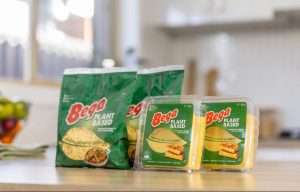
The latest squawks of indignation come from New Zealand’s second-largest dairy processor, Open Country Dairy, which has commissioned a report slamming the proposal alleging, among other things, that the change could lead to an increase in the price of domestic dairy products.
Opposition processors aren’t the only people feeling dismayed, Fonterra shareholders could be forgiven for feeling the cooperative has taken a cavalier attitude towards their substantial investment in the company, with share prices halving since the proposed changes were announced.

There is dismay, too, that the process has not been as well polished or streamlined as other Fonterra success stories, most notably getting unanimous support from Parliament for long overdue changes to the Dairy Industry Restructuring Act (DIRA) in 2019.
The idea of a change to Fonterra’s capital structure was greeted with vocal support by Minister of Agriculture, Damien O’Connor, only for him to withdraw Government support in November prior to a shareholder vote on the issue. It was painfully clear Fonterra and the Ministry for Primary Industries (MPI) were miles apart on what an acceptable structure looked like, but Fonterra pressed ahead with a farmer vote and gained 85% approval for the changes, essentially giving the Government an ultimatum.
Fonterra wants the changes because everybody in the industry can agree on one thing, the pool of milk available for processing is declining. Fonterra currently requires all suppliers to hold one share for every kilogram of milk solids they supply, a situation that both acts as a barrier to new suppliers joining the cooperative and frequently leads to farms leaving the co-op to free up capital.

This is a situation that suits Fonterra’s competitors very well indeed, and one that they exploit mercilessly to persuade farmers to supply their factories instead.
Fonterra is proposing that a supplier would need to hold only one share for every three kilograms of milk solids supplied, significantly lowering the barrier to joining the cooperative while simultaneously allowing existing shareholders to free up capital by reducing their shareholding.
With a high cost of entry, independent processors can more easily win supply from Fonterra in the name of competition and free market economies. With a lower cost of entry, Fonterra is more easily able to poach suppliers away from poor independents who are mere helpless waifs in the face of the dairy giant, or so their reporting would have you believe.
Despite heightened competition for milk from all processors due to shrinking supply, Fonterra is still required by DIRA to subsidise new entrants into the market to compete for that supply.
The latest in the long line of factories to set up in New Zealand is Singaporean-government owned Olam, which is building a facility in Tokoroa to become the Waikato’s 15th dairy factory.
Olam has sold its 15% stake in Open Country Dairy, itself starting life with subsidised milk from Fonterra, and using the money to build its own factory which in turn will be eligible for cost-price milk from Fonterra to get started. Just like Open Country, none of this milk will be sold on the domestic market, all will be sent overseas to compete with Fonterra product.
Open Country Dairy’s report suggesting milk prices could increase with the proposed changes is nothing new. For years it has accused Fonterra of paying dairy farmers too much, culminating in a 2019 judicial review of the Commerce Commission’s report into Fonterra’s base milk price calculations. The High Court dismissed the challenge, vindicating both the process by which milk prices are calculated and the Commerce Commission’s oversight of that process.
This time the theory is that Fonterra will artificially inflate milk prices by shifting dividend on shares into the milk price, thus luring suppliers back and pumping up the price of domestic dairy goods in the process.
Independent processors’ fear that Fonterra might game the system is not driven by concern for New Zealand consumers, if anything it may be driven by concern for their bottom lines. Independent processors are very vocal in comparing their price to Fonterra; a massive company heavily constrained by government regulation and a major player in the domestic market. They go very quiet when you point out they have more in common with Tatua; a small dynamic company with a minor domestic presence that specialises in high value exports, and maybe they should be matching Tatua’s payout rather than worrying about Fonterra’s.
I have a solution for domestic dairy prices; any company that received cost price milk under DIRA should be required to supply the same volume to the domestic market. It’s the height of hypocrisy to shout dire warnings about the price of cheese when the domestic market is a sandpit they have no intention of playing in.
Fonterra is desperate to see the capital structure changes gain government approval, and the government is annoyed at having an unsatisfactory proposal dumped in their laps. We can see this in the concessions MPI have demanded and Fonterra has seemingly readily agreed to, like having a second ministerial appointment sitting on the Milk Pricing Panel and agreeing that one of those appointments should be chair.
The whole capital structure change process has frustrated me. Fonterra has expended large amounts of political capital and agreed to almost everything the Ministry for Primary Industries have asked of them to get it across the line. This is energy that could have been far better spent on working to remove DIRA altogether. When this round of tinkering around the edges is finally over, DIRA will still be in place and decisions about the co-op’s future will still be in the government’s hands. Fonterra will still be constrained by a playing field that is only slightly less tilted in favour of its competitors. A level playing field remains a distant dream.
























